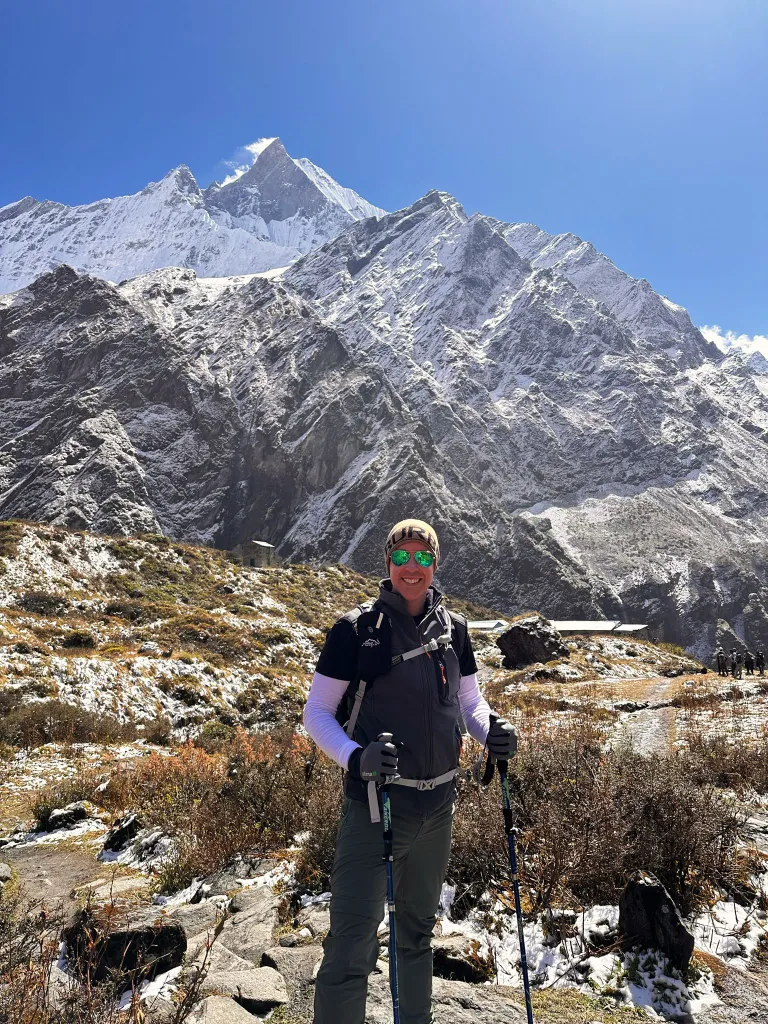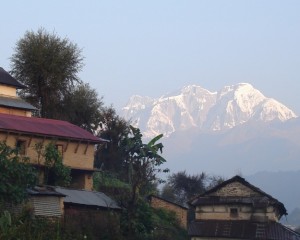Storytelling Through Trekking: How to Document Your Journey
The words are not enough to describe the beauty of the trek and each moment spent in the lap of the Himalayas. But what is even better is to document your journey and share it with other travellers and those who are willing to be part of such a journey.
Take an example, when a trekker shares their part of the majestic Everest Base Camp trek or the unexplored gems of the Kanchenjunga trek, with its alluring cultures, appealing landscapes, and kind, friendly people, making every part of the trek better. Well, that's the kind of content we enjoy, right?
Thus, documenting your journey in the age of social media is not just about remembering where you went, but also about capturing the feelings of those wonderful moments, what you learned from them, and how they changed you.
That being said, how about we learn a few exciting things about documenting your trekking story so you can invite others into that experience, to inspire, connect, and maybe even set out on their own path?
The Role of Visual and Written Stories in Inspiring Others
Well, the idea of sharing your trekking story is a great way to give a shine to your memories and the best inspiration for others, too. When you reflect on the ups and downs, the physical struggles you went through, the magnificent rewards, the people you met, and the places you saw. Even if they have never been to the mountain, the power of imagination will help them to understand your story.
Both visual and written stories, regardless of their source, are sufficient to create a human connection that extends beyond just photos or words. They get to see the beauty of the Himalayas, hear about the traditions of mountain villages, and understand a lifestyle very different from their own. It builds curiosity and respect for other cultures.
Moreover, some people may be intimidated by the trek due to the challenges they must overcome. But when they see your journey, how you prepared, what you went through, and how it changed you, they might feel brave enough to try.
Sharing your experiences also helps spread awareness about nature, culture, and the importance of preserving them. You can show why it’s essential to leave no trace, support local communities, and travel responsibly.

What Can You Capture?
While there is no rule for what anyone should capture, especially in such alluring and appealing gems of a trek surrounded by emotions, people, and little moments in the heart of nature, every element makes it unforgettable. But some things can become a part of your memories to carry along:
Moments of Emotion
Trekking stirs up all kinds of feelings. The joy of reaching a high pass, the tiredness after a steep climb, the quiet bond with someone walking beside you, or that one moment when a mountain peak suddenly appears through the clouds. These are the moments that leave a mark.
The People
Every trek is filled with people who make the journey memorable. Locals who greet you with kindness, fellow trekkers who share the same path, guides who show you the way and share their world with you. Their faces, voices, and stories become part of your own.
The Landscape
It’s not just about big mountain views. The trail is full of surprises. Gentle hills, thick forests, crystal-clear streams, flowers growing through rocks, and valleys wrapped in mist. Each scene pulls you in and tells its own quiet story.
Culture and Rituals
Trekking also means stepping into someone else’s world. Whether it’s a local festival, a prayer at a small temple, or a simple meal shared in a mountain village, these moments show the heart of the place. They help you understand the life that lives along the trail.
7 Ways to Capture Your Trek Effectively
Now that you are already aware, let's get to the finale and explore some of the best ways to commemorate your trekking stories, as there are thousands of tiny moments in between your journey. The sound of your footsteps on the trail or the friendly laughter shared in each of these moments slip away quickly if you miss them. So, here are seven gentle and meaningful ways to keep those memories safe and alive.
Journal Daily, Even Briefly
You don’t need to write pages and pages. Just take 5 minutes at the end of the day to jot down what you saw, how you felt, what surprised you, or what made you smile. It could be something as simple as, “Saw a line of yaks walking past in the fog,” or “Felt proud after that steep climb today.”
Over time, these notes become a story. Even a few lines can bring back a flood of memories when you read them later, the smells, the sounds, the air around you. It’s like catching pieces of the trail and tucking them into your pocket.
Use Captions with Heart
When you take a photo or video, don’t stop at just the location name or date. Tell people what was happening at that moment. What were you thinking? What did you feel?
- Instead of writing “Sunset at Namche,” you might say:
- “Felt small watching the sky turn gold. My legs were tired, but my heart was full.”
This is just one quote. You can use your photos and creativity to mix them so that they come alive for anyone who sees them, not just as images, but as real, lived moments.
Film Little Moments, Not Just Highlights
Big mountain views are beautiful, but don’t forget the quiet details. Record the sound of prayer flags fluttering. A quick video of your shoes being taken off after a long day. Your friend is sipping tea by the fire, eyes sleepy and content.
These everyday moments, the ones you think are “too small,” are often the most magical. They capture the real rhythm of your trek, from resting to thinking to breathing. Later, these clips will help you remember not just how the journey looked, but also how it felt.
Interview Yourself or Others
Sometimes, the best stories are the ones you tell on the go. Pull out your phone and ask yourself:
- “How am I feeling right now?”
- “What was the hardest part of today?”
- “What am I learning?”
You can also record others, such as your guide talking about the village you’re passing through or a fellow trekker sharing their reason for taking the journey. These voices add richness and emotion to your memory. They remind you that the trek was shared with others.
Photograph with Intention
Instead of taking hundreds of photos without thinking, try slowing down and being mindful. Look for a moment that really makes you feel something: a child waving at you from a field, a single flower growing from a rock, a shadow falling across a snowy path.
Consider how you want the photo to evoke its intended emotion. You don’t need fancy gear. Just notice the light, the angle, and the emotion behind what you’re seeing.
Collect Small Artifacts
Sometimes, the most minor things carry the deepest memories. A leaf from the forest trail, a train ticket to the starting point, and a napkin from a lodge where you had the best soup. You can also sketch something that catches your eye, a mountain shape, a door design, or the pattern of a village carpet.
Keep these in a little pouch or tape them into your journal. These silent pieces, though they don’t say anything out loud, hold the feeling of the place and time in a special way.
Reflect After the Trek
Once you're home, give yourself space to sit with everything. Go through your journal, photos, and recordings. What patterns do you see? What did the journey teach you? What did you leave behind, and what did you bring back with you?
Write it down in one place. It doesn’t have to be public, maybe it’s a letter to yourself, a blog post, or a scrapbook. Putting all the pieces together helps you understand the deeper meaning of your journey, and maybe, it even inspires your next one.
To wrap up, Trekking is about the moments you capture along the way. Each summit reached, each quiet pause in a meadow, and every new face you meet adds layers to your story. When you document your trek, you don’t just remember the trail; you preserve the emotions, the landscapes, and the experiences that make it unforgettable.
Your journey can inspire others to step into the unknown and discover the world through your eyes. So, take a moment to capture your adventure. And when you're ready to write your own story, Nepal Vision Trek is here to guide you through the wonders of Nepal, helping you create memories that last a lifetime.
FAQS






